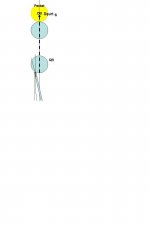titlistsucker
Deceased
That enuff u would never believe how many players, even top players, play the game without really grasping what really happens to whitey.
i agree on low english reducing skid.. In snooker i was taught that half a tip below the centre strike is the firmest shot and best shot to play, as it reduces possible "kick--> slight jump to the CB due to dirt" and "Skid -> when CB slides" ..
i agree on low english reducing skid.. In snooker i was taught that half a tip below the centre strike is the firmest shot and best shot to play, as it reduces possible "kick--> slight jump to the CB due to dirt" and "Skid -> when CB slides" ..




